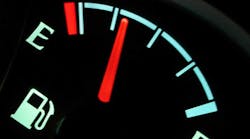The U.S. Environmental Protection Agency and the National Highway Traffic Safety Administration have released a new final rule on federal fuel economy standards, for cars and light-duty trucks produced from 2017 through 2025. The agencies, working on behalf of the U.S. Dept. of Transportation, stated the goal in forming the rule is “to further reduce greenhouse gas emissions and improve fuel economy.”
The new rule is a result of a May 2010 directive by President Obama for EPA and NHTSA to develop “a coordinated National Program” that improves fuel economy and cuts GHG, and responds to a critical need to address global climate change and to reduce oil consumption.
In 2010, EPA and NHTSA issued a rule to increase the GHG and fuel economy standards for cars and light trucks from a combined 25 mpg to 35.5 mpg by the 2016 model year, a 40% increase.
Now, EPA has set separate standards for cars and trucks. For passenger cars, it set an average CO2 limit of 163 grams per mile by 2025, the equivalent of 54.5 mpg if emissions are reduced primarily through fuel economy improvements. For light trucks, EPA increased the emissions standards at a slower rate.
NHTSA plans to require automobile manufacturers to achieve a fleetwide average of 41 mpg in 2021.
The Obama Administration anticipates that the fuel-efficiency standards will increase to 48.7-49.7 mpg in 2025, but the standards will not take effect until NHTSA completes an additional planned review prior to the 2022 model year.
“Between this new rule and the administration's previously issued standards, the average car's fuel economy will nearly double by 2025, rising to 54.5 mpg,” Transportation Secretary Ray LaHood told reporters. “This will cut oil consumption by 12 billion barrels and save consumers more than $1.7 trillion at the pump.”
NHTSA indicated it continues to finalize the Corporate Average Fuel Economy (CAFÉ) standards for domestic manufacturers, for model years 2017-2021, and will set final standards for model years 2022- 2025 in a future ruling.
EPA is finalizing GHG standards for passenger cars, light-duty trucks, and medium-duty passenger vehicles, for model years 2017-2025, under the Clean Air Act.






